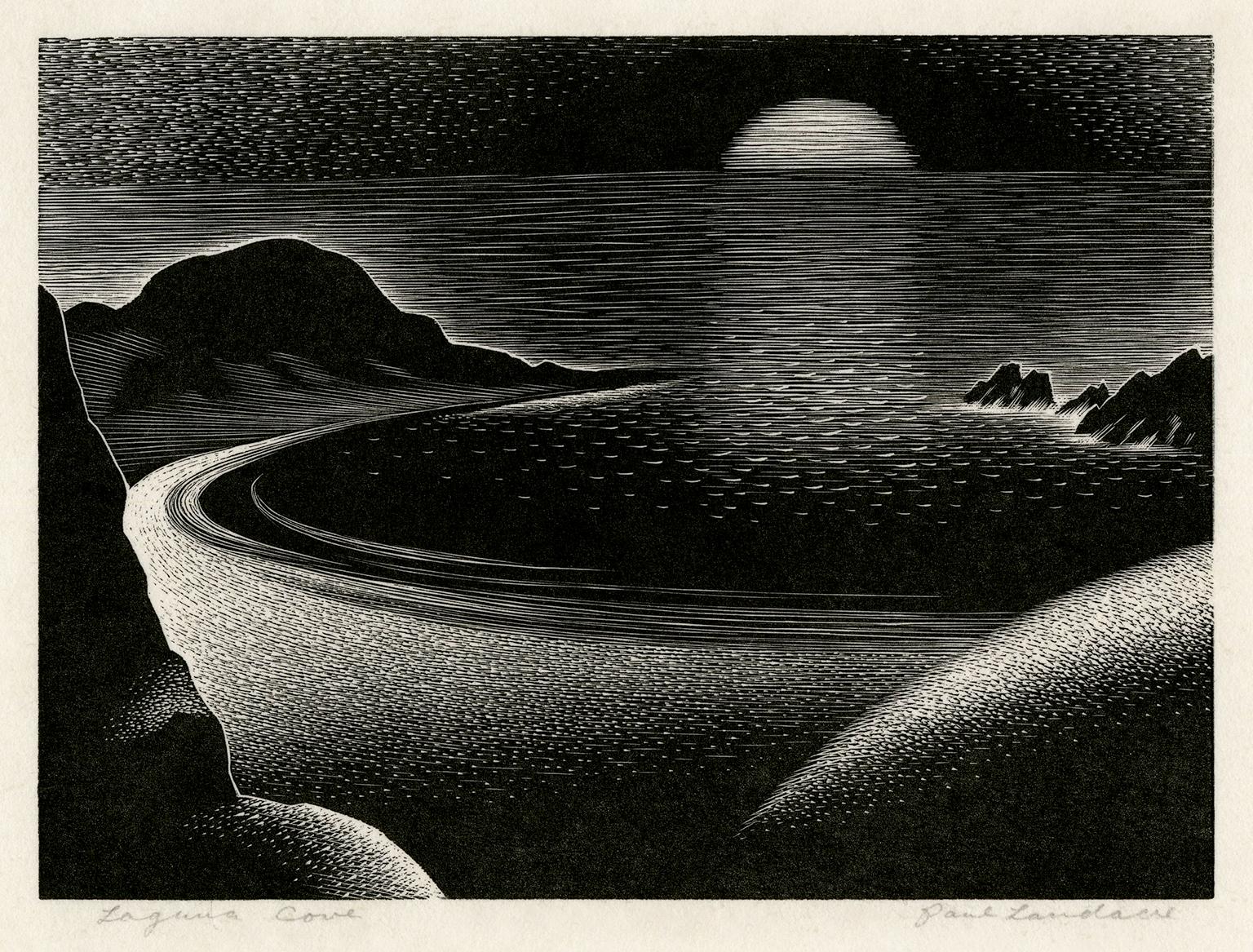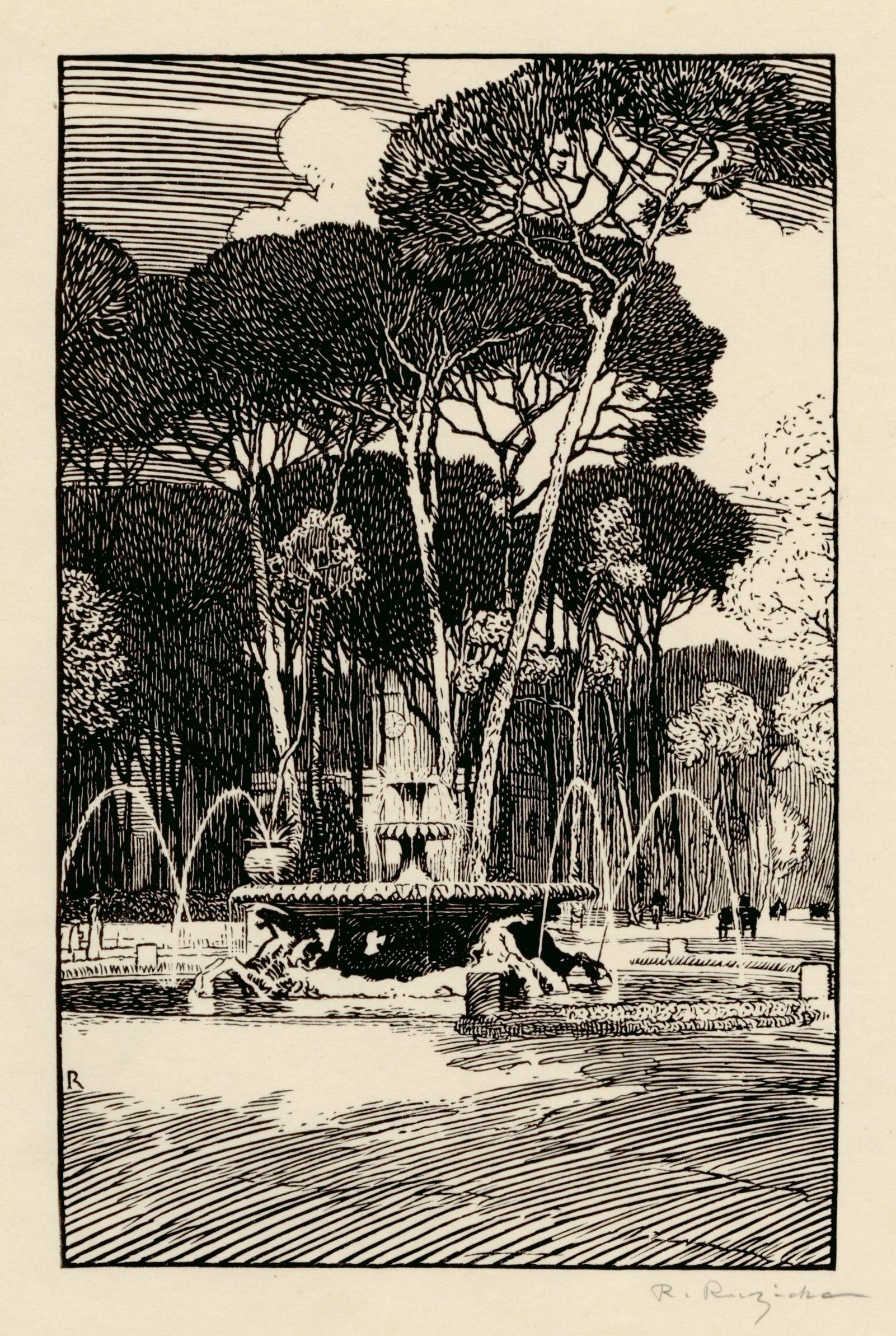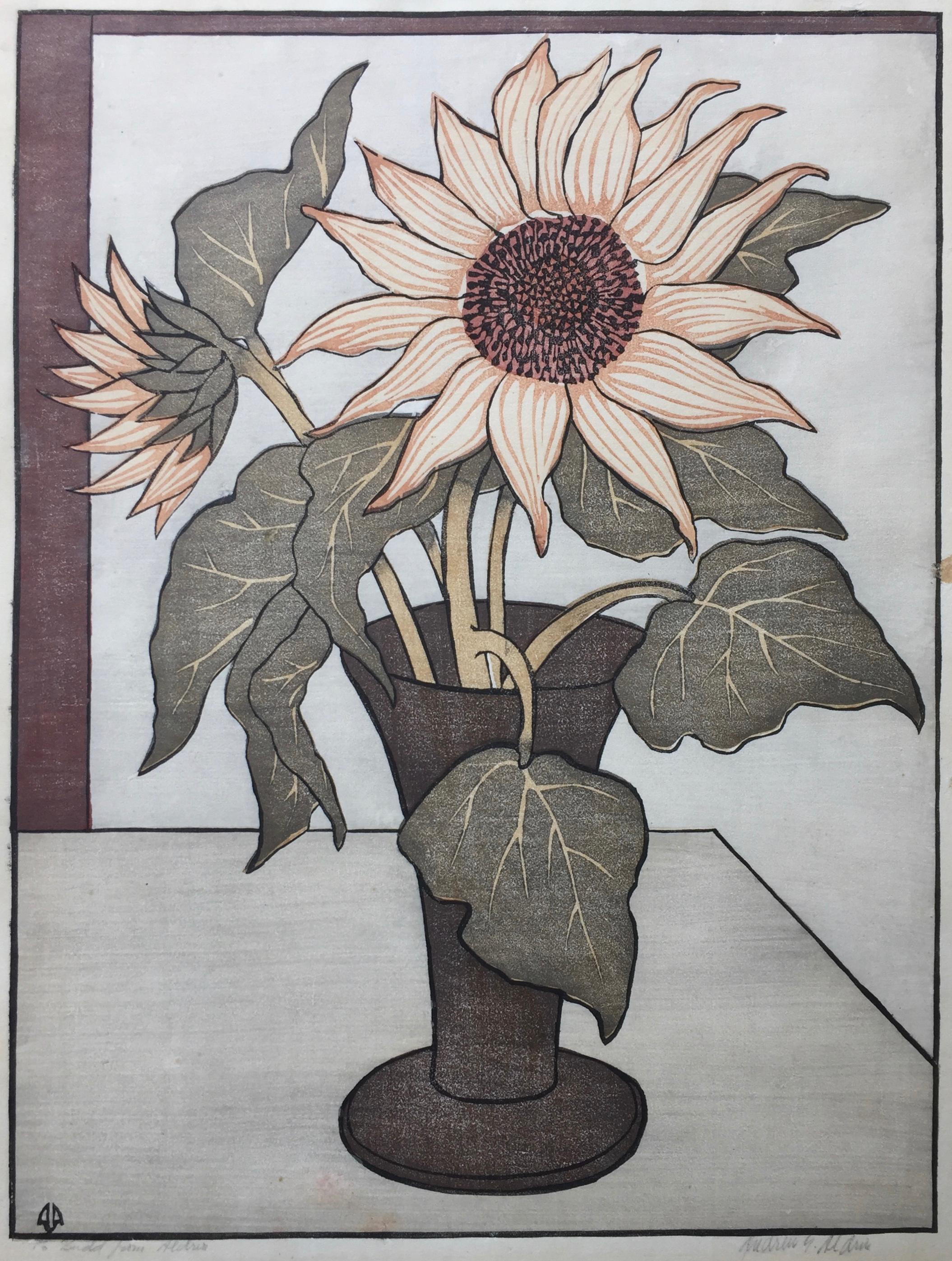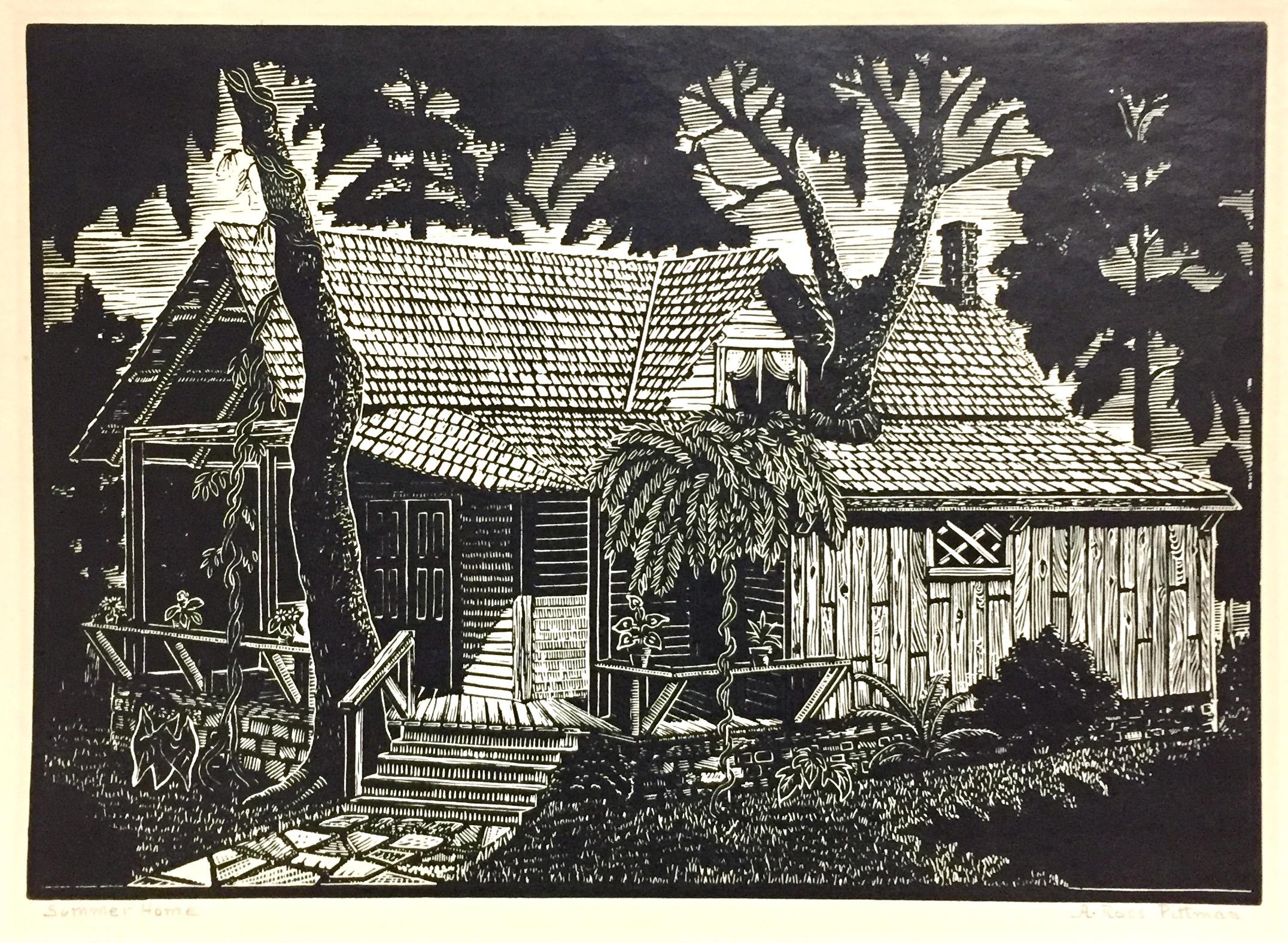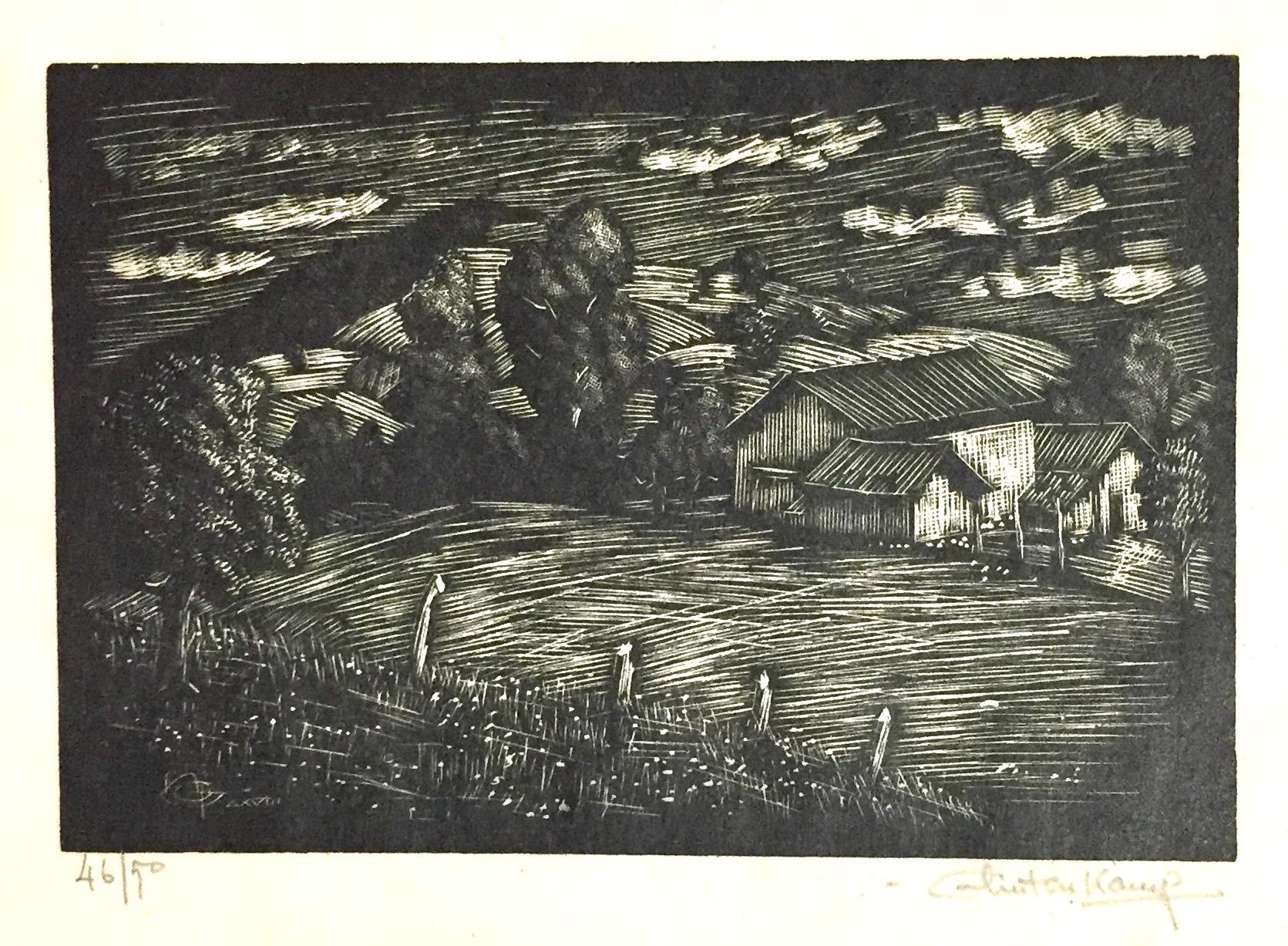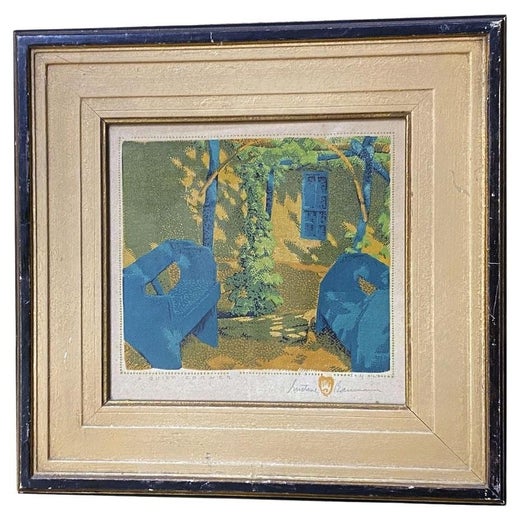Gustave Baumann'Taos Placita' — 1940s Southwest Regionalism1947
1947
About the Item
- Creator:Gustave Baumann (1881-1971, American, German)
- Creation Year:1947
- Dimensions:Height: 9.63 in (24.47 cm)Width: 11.25 in (28.58 cm)
- Medium:
- Movement & Style:
- Period:
- Condition:
- Gallery Location:Myrtle Beach, SC
- Reference Number:
Gustave Baumann
Gustave Baumann was born in Magdeburg, Germany, on June 27, 1881. Baumann immigrated to the USA as a child. He grew up in Chicago but became curious about New Mexico. He visited friends there in 1917 and settled in Santa Fe in 1918. He spent over 50 years there, where he participated in the art community. He created woodblocks from which he made prints and also became a carver of saints and marionettes, working with the Marionette Theatre. Baumann also created numerous paintings in bright colors. His woodcut subjects are church figures, scenes of sacred Indian pictographs and landscapes, including the Grand Canyon. During the 1930s, Baumann was a Works Progress Administration co-ordinator for Santa Fe. He died in Santa Fe on October 8, 1971.
- ShippingRetrieving quote...Ships From: Myrtle Beach, SC
- Return PolicyA return for this item may be initiated within 7 days of delivery.
- 'Laguna Cove' — 1930s American ModernismBy Paul LandacreLocated in Myrtle Beach, SCPaul Landacre, 'Laguna Cove', wood engraving, 1935; edition 60 (16 printed), 2nd edition 150 (6 printed), Woodcut Society 200, Wien 247. Signed and titled in pencil. A brilliant, black impression, on cream wove Japan, with full margins (3/4 to 1 3/4 inches), in excellent condition. Archivally matted to museum standards, unframed. This impression is from the edition published for the Twentieth Presentation Print of the Woodcut Society, 1941. Printed by Torch Press, Cedar Rapids. Literature: Reproduced in 'James Swann...Category
1930s American Modern Landscape Prints
MaterialsWoodcut
- Fountain of Sea Horses, Rome — Early 20th CenturyBy Rudolph RuzickaLocated in Myrtle Beach, SCRudolph Ruzicka, 'Fountain of Sea Horses, Rome', wood engraving, c. 1915. Signed, dated, and titled in pencil. Initialed in the block, lower left. A fine, richly-inked impression, on...Category
1910s American Modern Landscape Prints
MaterialsWoodcut
- 'Hill' — 1930s American ModernismBy Paul LandacreLocated in Myrtle Beach, SCPaul Landacre, 'Hill', wood engraving, 1936, edition 60 (only 54 printed); only 2 impressions printed in a second edition of 150. Signed, titled, and numbered '49/60' in pencil. Wien...Category
1930s American Modern Landscape Prints
MaterialsWoodcut
- Tranquil Harbor (Gloucester, Massachusetts)By Lawrence WilburLocated in Myrtle Beach, SCLawrence Nelson Wilbur (1897-1988), 'Tranquil Harbor' (Gloucester, Massachusetts), wood engraving, edition 55, 1958. Signed in pencil, and signe...Category
1950s American Modern Landscape Prints
MaterialsWoodcut
- 'Backyards of Broadway' — 1920s American Precisionism, New York CityBy Louis LozowickLocated in Myrtle Beach, SCLouis Lozowick, 'Backyards of Broadway ( Waterfront I )', lithograph, 1926, edition 10, Flint 7. Signed in pencil. A fine, richly-inked impression, on BFK Rives off-white, wove paper...Category
1920s American Modern Figurative Prints
MaterialsLithograph
- 'Financial District', New York City — 1930s American ModernismBy Howard Norton CookLocated in Myrtle Beach, SCHoward Cook, 'Financial District', lithograph, 1931, edition 75, Duffy 155. A fine, richly-inked impression, on cream wove paper, the full sheet with wide margins (2 3/4 to 5 5/8 inches), in excellent condition. Image size 13 5/16 x 10 3/8 inches (338 x 264 mm); sheet size 23 x 16 inches (584 x 406 mm). Matted to museum standards, unframed. Literature: 'American Master Prints from the Betty and Douglas Duffy Collection', the Trust for Museum Exhibitions, Washington, D.C., 1987. Collections: Crystal Bridges Museum of American Art, Library of Congress, Metropolitan Museum of Art, Philadelphia Museum of Art, Smithsonian American Art Museum. ABOUT THE ARTIST Howard Norton Cook (1901-1980) was one of the best-known of the second generation of artists who moved to Taos. A native of Massachusetts, he studied at the Art Students League in New York City and at the Woodstock Art Colony. Beginning his association with Taos in 1926, he became a resident of the community in the 1930s. During his career, he received two Guggenheim Fellowships and was elected an Academician in the National Academy of Design. He earned a national reputation as a painter, muralist, and printmaker. Cook’s work in the print mediums received acclaim early in his career with one-person exhibitions at the Denver Art Museum (1927) and the Museum of New Mexico (1928). He received numerous honors and awards over the years, including selection in best-of-the-year exhibitions sponsored by the American Institute of Graphics Arts, the Brooklyn Museum, the Society of American Etchers, and the Philadelphia Print Club. His first Guggenheim Fellowship took him to Taxco, Mexico in 1932 and 1933; his second in the following year enabled him to travel through the American South and Southwest. Cook painted murals for the Public Works of Art Project in 1933 and the Treasury Departments Art Program in 1935. The latter project, completed in Pittsburgh, received a Gold Medal from the Architectural League of New York. One of his most acclaimed commissions was a mural in the San Antonio Post Office in 1937. He and Barbara Latham settled in Talpa, south of Taos, in 1938 and remained there for over three decades. Cook volunteered in World War II as an Artist War Correspondent for the US Navy, where he was deployed in the Pacific. In 1943 he was appointed Leader of a War Art Unit...Category
1930s American Modern Figurative Prints
MaterialsLithograph
- Ship RockBy Norma Bassett HallLocated in Santa Monica, CANORMA BASSETT HALL (1889 - 1957) SHIP ROCK, c. 1940 Color woodcut signed and numbered in pencil, edition 40 on stiff fibrous paper. 10 x 14 inches, Sheet size 11 1/8 x 15 inches...Category
1940s American Modern Landscape Prints
MaterialsWoodcut
- THE SUNFLOWERLocated in Santa Monica, CAANDERS ALDRIN (Swedish /American 1889 – 1970) THE SUNFLOWER ca. 1935 (Newark Museum 9) Color woodcut, edition c. 150. Signed, unnumbered, but dedicat...Category
1930s American Modern Landscape Prints
MaterialsWoodcut
- A. Ross Pittman, Summer HomeLocated in New York, NYThis print is signed and titled in pencil. A native of Tennessee and a physician, Pittman began to make prints in 1936 in Trenton, New Jersey. However, scene of his home state remain...Category
1930s American Modern Landscape Prints
MaterialsWoodcut
- Hendrik Glintenkamp, (Farmyard)By Hendrik GlintenkampLocated in New York, NYMore a wood engraving rather than a woodcut, Glintenkamp's Farmyard scene was given all the care and detail of the artist's more complex images. It is signed and numbered in pencil. ...Category
1920s American Modern Landscape Prints
MaterialsWoodcut
- New York Stock Exchange, Woodcut Print by Ted DaviesBy Ted DaviesLocated in Long Island City, NYArtist: Ted Davies, American (1928 - ) Title: New York Stock Exchange Year: 1968 Medium: Woodcut, signed and numbered in pencil Edition: 248/25...Category
1960s American Modern Landscape Prints
MaterialsWoodcut
- Henry R. Diamond, WhalerBy Henry R. DiamondLocated in New York, NYReally a wood engraving rather than a woodcut, Henry R. Diamond's Whaler is majestic. It is signed and titled in pencil.Category
Early 20th Century American Modern Landscape Prints
MaterialsWoodcut

